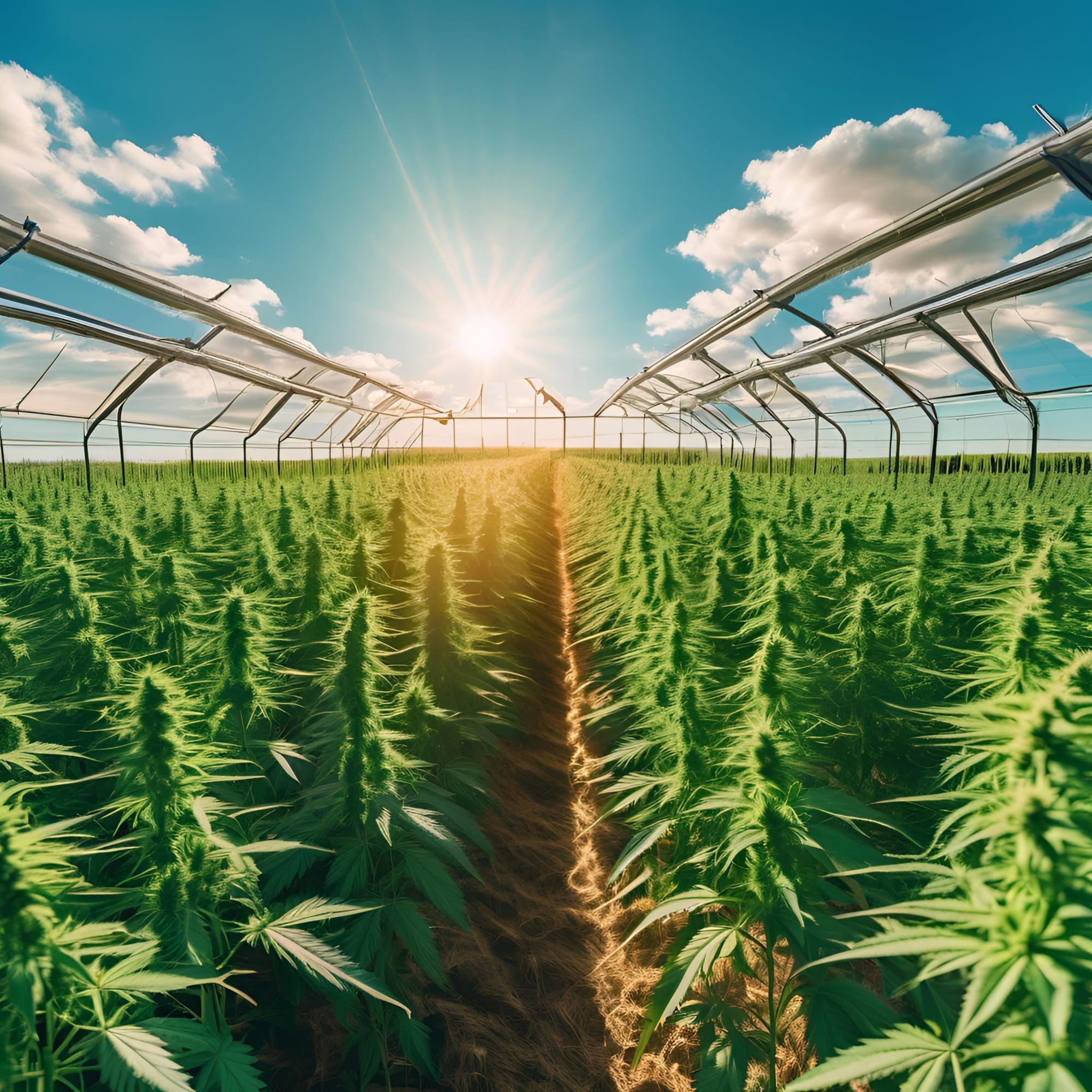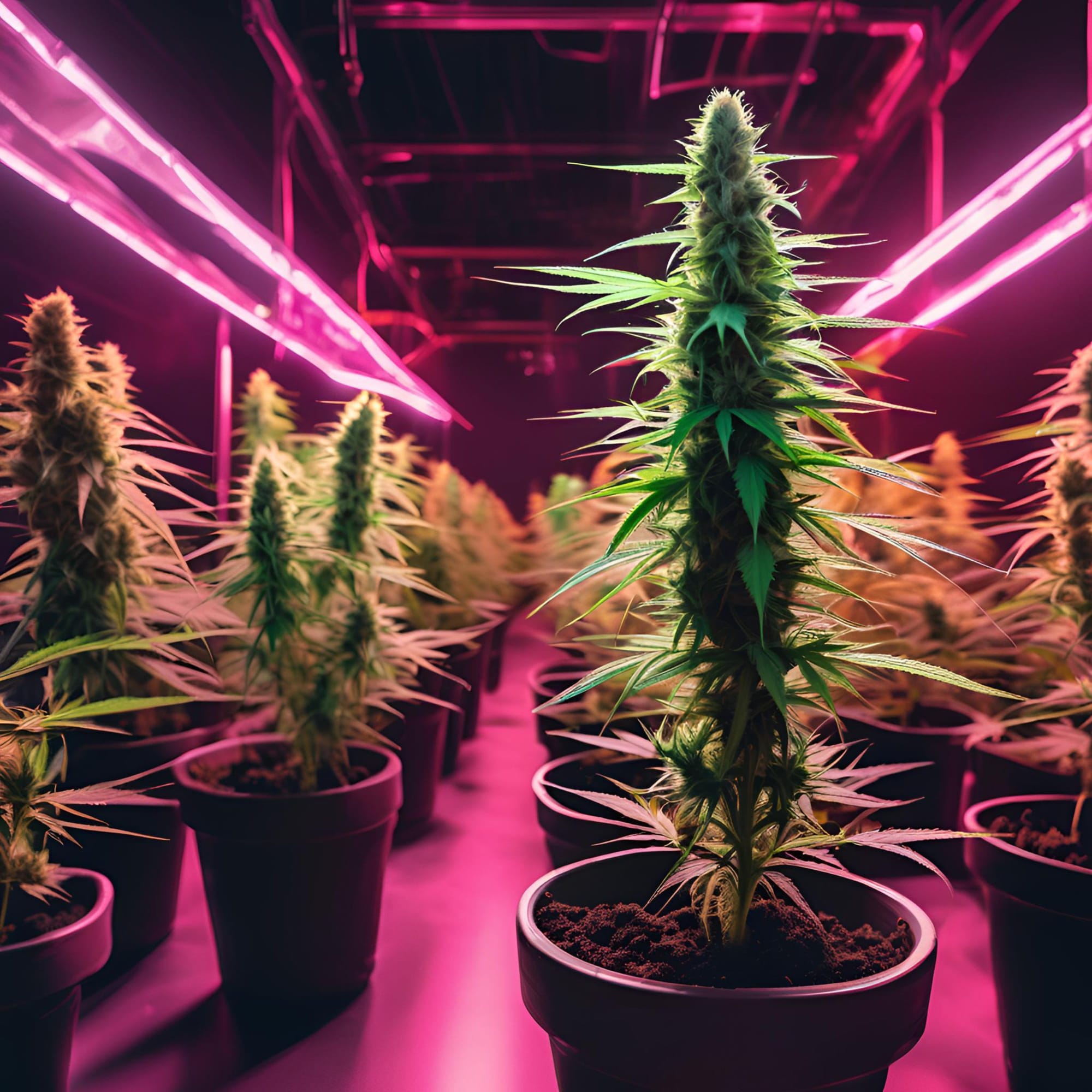








buymeacoffee.com coming soon..
Introduction to the World of Cannabis and Its Potential
Cannabis, a plant with a rich history that spans thousands of years, has recently emerged from the shadows of prohibition into a world of possibility and promise. Once demonized and stigmatized, this versatile herb is now being recognized for its myriad applications, from medicinal treatments to economic revitalization. As society begins to dismantle outdated perceptions and embrace the multifaceted nature of cannabis, we find ourselves at a pivotal moment in history where the potential of this remarkable plant can be fully realized.
The allure of cannabis lies not only in its psychoactive properties but also in its vast array of therapeutic benefits. Research has begun to uncover how cannabinoids, the active compounds in cannabis, interact with the human body to alleviate pain, reduce anxiety, and manage various medical conditions. As the stigma surrounding cannabis dissipates, more patients and healthcare providers are exploring its possibilities as a legitimate alternative or complement to traditional medicine.
Beyond its medical applications, the cannabis industry is proving to be a powerful economic engine. Legalization efforts in various regions have sparked job creation, increased tax revenues, and entrepreneurial opportunities, particularly in communities that have historically faced economic challenges. This burgeoning industry is not just about profit; it represents a chance for social equity and community investment, fostering environments where individuals can thrive.
Moreover, cannabis is finding its place in the wellness and lifestyle sectors, appealing to consumers seeking holistic approaches to health and well-being. From CBD-infused products to cannabis-based beauty lines, the plant's versatility is reshaping consumer habits and challenging conventional notions of wellness.
As we embark on this exploration of cannabis and its potential, we must acknowledge the complexities and challenges that lie ahead. While the opportunities are vast, the journey toward fully realizing our cannabis dreams is fraught with obstacles that require thoughtful navigation. In the following sections, we will delve deeper into the benefits, challenges, and future innovations that will shape the cannabis landscape, ultimately guiding us toward a more enlightened understanding of what this extraordinary plant can offer.
The Benefits of Cannabis
As the world increasingly embraces the potential of cannabis, it is essential to recognize the myriad benefits this versatile plant offers. From medical advancements to economic growth and improvements in individual wellness, cannabis presents a transformative opportunity that can enhance lives and communities alike.
Medical Benefits for Patients
One of the most significant contributions of cannabis is its application in the medical field. Research has demonstrated that cannabinoids can alleviate symptoms for various medical conditions. For patients suffering from chronic pain, cannabis can provide relief where traditional pharmaceuticals may fall short. Conditions such as epilepsy, multiple sclerosis, and anxiety disorders have also shown positive responses to cannabis treatment, enhancing the quality of life for many individuals.
Moreover, cannabis has garnered attention for its potential to mitigate the side effects of chemotherapy in cancer patients, such as nausea and loss of appetite. This medicinal capability has led to a growing acceptance of cannabis as a legitimate treatment option within the healthcare community, prompting ongoing research to unlock further therapeutic applications and refine dosing guidelines for optimal efficacy.
Economic Impact on Communities
The economic impact of cannabis legalization is profound, with potential benefits extending far beyond the plant itself. States that have legalized marijuana have seen an influx of tax revenue that can be reinvested into public services such as education, healthcare, and infrastructure. For example, Colorado, one of the pioneers in cannabis legalization, reported over $1 billion in sales in its first year, generating significant tax revenue that has funded various community programs.
Additionally, the cannabis industry creates job opportunities, from cultivation and manufacturing to retail and research. These jobs often provide living wages, boosting local economies and reducing unemployment rates. As more states consider legalization, the economic ripple effect can lead to revitalization in communities that have faced economic challenges.
Cannabis in Wellness and Lifestyle
Beyond the medical and economic benefits, cannabis has carved out a niche within the wellness and lifestyle sectors. Many individuals are turning to cannabis as a natural alternative for stress relief and relaxation, integrating it into their self-care routines. The rise of cannabis-infused products, such as edibles, beverages, and topical treatments, reflects a growing acceptance of cannabis as a wellness tool that complements a healthy lifestyle.
Furthermore, the cultivation of cannabis has become a hobby for many, promoting a sense of community and connection among enthusiasts. From home growers to artisanal producers, the craft of cannabis cultivation encourages sustainable practices and a deeper appreciation for the nuances of the plant. As consumers become more educated about the benefits and varieties of cannabis, they are empowered to make informed choices that align with their health and wellness goals.
In summary, the benefits of cannabis are far-reaching, encompassing medical, economic, and lifestyle dimensions. As we continue to explore and embrace these advantages, it becomes increasingly clear that cannabis has the potential to improve lives and foster thriving communities.
Challenges Facing Cannabis Legalization
Despite the growing recognition of cannabis's potential benefits, the path to widespread legalization is fraught with challenges that must be addressed to turn our collective cannabis dreams into reality. These challenges can be broadly categorized into regulatory hurdles, social stigma, and economic barriers.
Regulatory Hurdles and Compliance
One of the most significant challenges facing cannabis legalization is the complex web of regulations that vary widely from region to region. In many areas, cannabis remains classified as a Schedule I substance, complicating its legal status and the ability for businesses to operate within a clear legal framework. In jurisdictions where cannabis has been legalized, the regulatory landscape can still be daunting. Entrepreneurs often face a patchwork of local, state, and federal laws, which can create confusion and impede market entry. Compliance with these regulations requires substantial resources, as businesses must navigate licensing requirements, taxation, and strict product quality controls.
Moreover, the lack of a unified federal policy in countries like the United States further complicates matters, creating an environment of uncertainty for investors and entrepreneurs alike. Until a cohesive regulatory framework is established, it will be challenging for the cannabis industry to flourish.
Social Stigma and Public Perception
Social stigma surrounding cannabis use continues to be a formidable barrier to legalization efforts. Despite growing acceptance, many individuals still associate cannabis with negative stereotypes, often influenced by decades of anti-drug campaigns. This stigma can lead to resistance from policymakers and the general public, hindering legislative progress.
Moreover, public perception is often shaped by misinformation regarding the safety and effects of cannabis. To facilitate a shift toward acceptance, it is crucial to engage in comprehensive education campaigns that inform the public about the benefits and risks associated with cannabis use. Only through informed dialogue can we begin to dismantle the outdated perceptions that impede progress.
Economic Barriers to Entry for Entrepreneurs
The cannabis industry presents a unique set of economic challenges, particularly for new entrepreneurs seeking to enter the market. High startup costs associated with licensing, compliance, and establishing a brand can deter many potential business owners, particularly those from marginalized communities that have historically been disproportionately impacted by cannabis prohibition.
Additionally, access to financial resources remains a significant obstacle. Many banks and financial institutions are hesitant to engage with cannabis-related businesses due to legal uncertainties, leading to a reliance on cash transactions. This lack of access to traditional banking services can stifle innovation and limit growth opportunities within the industry.
In summary, while the potential benefits of cannabis are vast, the challenges surrounding its legalization cannot be overlooked. Addressing regulatory hurdles, combating social stigma, and ensuring equitable access for entrepreneurs will be essential steps toward realizing the full promise of cannabis. As advocates and stakeholders continue to push for change, it is crucial to confront these challenges head-on to pave the way for a more inclusive and thriving cannabis landscape.
Future of Cannabis Innovation
As the cannabis industry continues to evolve, the future promises a wealth of innovation that could reshape how we perceive and interact with this versatile plant. From groundbreaking research to novel consumption methods and technological advancements, the potential for cannabis innovation is vast and exciting.
Advancements in Cannabis Research
Scientific exploration into cannabis is expanding rapidly, uncovering the vast array of compounds found within the plant and their potential therapeutic applications. Cannabinoids, terpenes, and flavonoids are being studied for their effects on various conditions, from chronic pain and anxiety to neurodegenerative diseases and cancer. Research institutions and universities are increasingly looking to deepen our understanding of the endocannabinoid system, which plays a crucial role in maintaining bodily homeostasis.
Moreover, the development of precision medicine—a tailored approach to treatment based on individual genetic profiles—could revolutionize how cannabis is prescribed and consumed. As researchers uncover more about the genetic makeup of both cannabis strains and patients, we may see the emergence of customized formulations that maximize therapeutic benefits while minimizing side effects.
Emerging Trends in Consumption Methods
The ways in which consumers are choosing to experience cannabis are diversifying. Traditional smoking methods are being supplemented by innovative consumption techniques that cater to a broader audience. Vaping, edibles, tinctures, and topicals are gaining popularity, each offering unique benefits and experiences.
The rise of microdosing—consuming very small, controlled amounts of cannabis—has also emerged as an appealing way to harness the plant’s benefits without overwhelming psychoactive effects. This trend is particularly attractive to those looking to integrate cannabis into their daily wellness routines without the risk of intoxication.
Furthermore, the integration of cannabis into culinary arts is creating a new frontier. Chefs and food enthusiasts are experimenting with infused dishes that elevate the dining experience, allowing consumers to explore the flavors and effects of cannabis in a social and gastronomic context.
The Role of Technology in Cannabis Production
The integration of technology in cannabis cultivation and production is set to revolutionize the industry. Advanced agricultural techniques, such as hydroponics, aeroponics, and vertical farming, are allowing growers to maximize yield while minimizing resource consumption. This not only enhances quality but also promotes sustainability—a crucial factor as the industry scales.
Additionally, data analytics and artificial intelligence are becoming invaluable tools for growers and manufacturers. These technologies can optimize growth conditions, monitor plant health, and enhance efficiency in supply chains. Blockchain technology is also poised to play a significant role, providing transparency and traceability throughout the cannabis supply chain, which is essential for regulatory compliance and consumer trust.
As we look toward the future, it is clear that the cannabis industry is on the cusp of a transformative era. With ongoing research, evolving consumption trends, and technological advancements, the potential for innovation is limitless. By embracing these changes, we can begin to realize our cannabis dreams and fully unlock the myriad benefits this remarkable plant has to offer.
Conclusion: Realizing Our Cannabis Dreams
As we stand at the precipice of a new era in cannabis, it is clear that the potential of this remarkable plant is vast and multifaceted. From its profound medical benefits that provide relief to countless patients to its ability to invigorate local economies and foster entrepreneurial spirit, cannabis is more than just a product; it represents a movement toward greater acceptance, innovation, and wellness.
However, realizing our cannabis dreams requires a collective effort to overcome the challenges that still loom large. The regulatory hurdles that impede progress must be navigated with thoughtful policy-making that prioritizes public safety while encouraging growth. Furthermore, dismantling the social stigma surrounding cannabis usage is essential for fostering a culture of understanding and acceptance. As we work to create a more inclusive environment for cannabis entrepreneurs, we must address the economic barriers that hinder access to this burgeoning market.
Looking ahead, the future of cannabis innovation is bright. With advancements in research, we are uncovering new therapeutic applications and refining our understanding of the plant's chemistry. Emerging trends in consumption methods are reshaping how we experience cannabis, making it more accessible and appealing to a broader audience. The integration of technology in cannabis production not only enhances efficiency but also ensures quality and sustainability, paving the way for a responsible and thriving industry.
In conclusion, realizing our cannabis dreams is not merely an aspiration but a tangible goal. By embracing the benefits, addressing the challenges, and fostering innovation, we can build a future where cannabis is celebrated for its contributions to health, economy, and lifestyle. Together, we can cultivate a world where the dreams surrounding this extraordinary plant become our collective reality, enriching lives and communities for generations to come.





